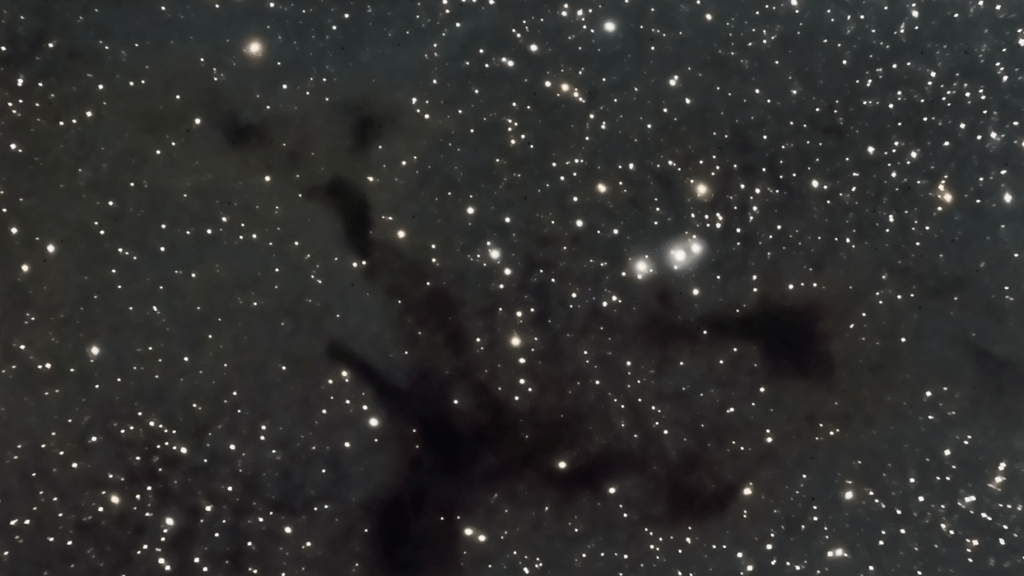This is my astrophotograph of the Dark Seahorse Nebula, catalogued in the Barnard Catalogue of Dark Markings in the Sky as Barnard 150. It is an interstellar cloud so dense that it blocks out the background light of the Milky Way and of background stars. Dark nebulae are made up of extremely cold dense clouds of dust grains, coated with frozen carbon monoxide and nitrogen. These particles are sub-micrometre sized, which is around the wavelength of visible light, and so it is completely attenuated.
This photograph shows one part of the much larger nebula. With a bit of imagination, the dark cloud shown here outlines the shape of a seahorse’s head, floating in a sea of stars. The head points upwards with the body trailing away towards the right. The whole seahorse can be seen in this photograph on APOD.
Although the stars in the centre are round, the stars in the corners and towards the left and right edges are distorted and streaky. I used a 0.5× reducer to increase the field of view, but doing this without any field flattener has caused coma, which is the name of this optical artefact. Adding a field flattener such as the Explore Scientific 0.7× reducer/flattener (instead of using my 0.5× reducer) would fix the problem.
Frames
- 168× 130-s light frames
- 63× dark frames
- 42× flat frames
- 40× dark flat frames
- 102× bias frames
Equipment
- Explore Scientific ED 102 mm Apo f/7 refractor
- Sky-Watcher EQ5 PRO SynScan GOTO equatorial mount
- Altair GPCAM3 290C colour camera (with UVIR window fitted) and 0.5× reducer
- Altair 60mm guide scope
- Altair GPCAM2 AR0130 mono guide camera
Software
- Sharpcap
- PHD2
- DeepSkyStacker
- Photoshop


